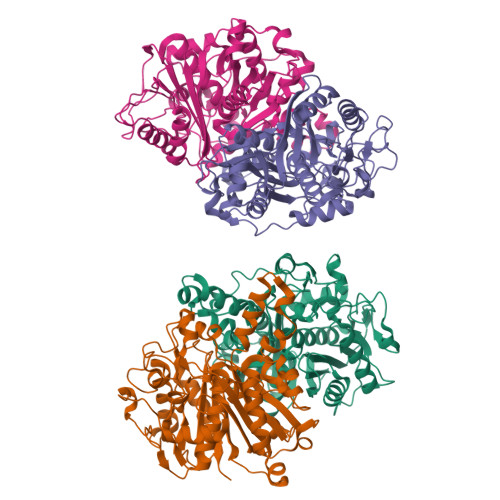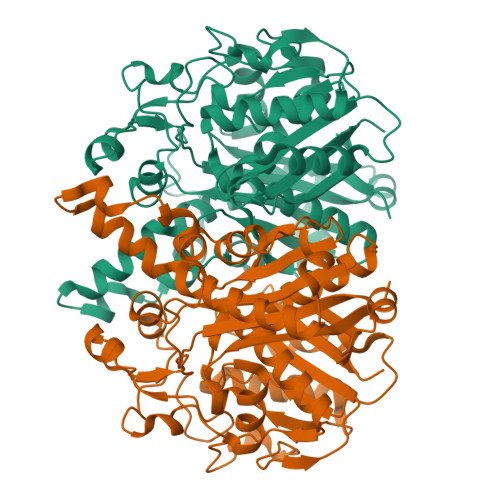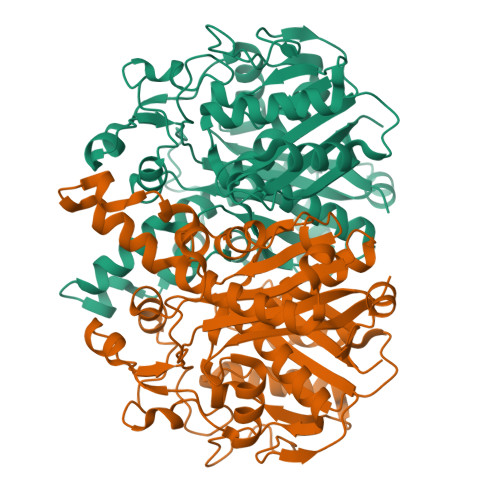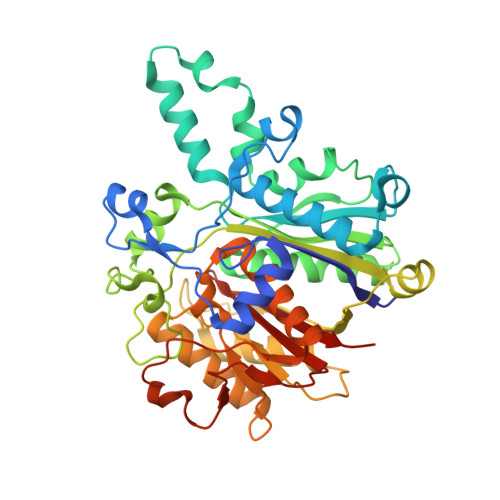Identification and analysis of the acyl carrier protein (ACP) docking site on beta-ketoacyl-ACP synthase III.
Zhang, Y.M., Rao, M.S., Heath, R.J., Price, A.C., Olson, A.J., Rock, C.O., White, S.W.(2001) J Biological Chem 276: 8231-8238
- PubMed: 11078736
- DOI: https://doi.org/10.1074/jbc.M008042200
- Primary Citation of Related Structures:
1G5X - PubMed Abstract:
The molecular details that govern the specific interactions between acyl carrier protein (ACP) and the enzymes of fatty acid biosynthesis are unknown. We investigated the mechanism of ACP-protein interactions using a computational analysis to dock the NMR structure of ACP with the crystal structure of beta-ketoacyl-ACP synthase III (FabH) and experimentally tested the model by the biochemical analysis of FabH mutants. The activities of the mutants were assessed using both an ACP-dependent and an ACP-independent assay. The ACP interaction surface was defined by mutations that compromised FabH activity in the ACP-dependent assay but had no effect in the ACP-independent assay. ACP docked to a positively charged/hydrophobic patch adjacent to the active site tunnel on FabH, which included a conserved arginine (Arg-249) that was required for ACP docking. Kinetic analysis and direct binding studies between FabH and ACP confirmed the identification of Arg-249 as critical for FabH-ACP interaction. Our experiments reveal the significance of the positively charged/hydrophobic patch located adjacent to the active site cavities of the fatty acid biosynthesis enzymes and the high degree of sequence conservation in helix II of ACP across species.
Organizational Affiliation:
Department of Biochemistry, St. Jude Children's Research Hospital, Memphis, Tennessee 38105, USA.



















